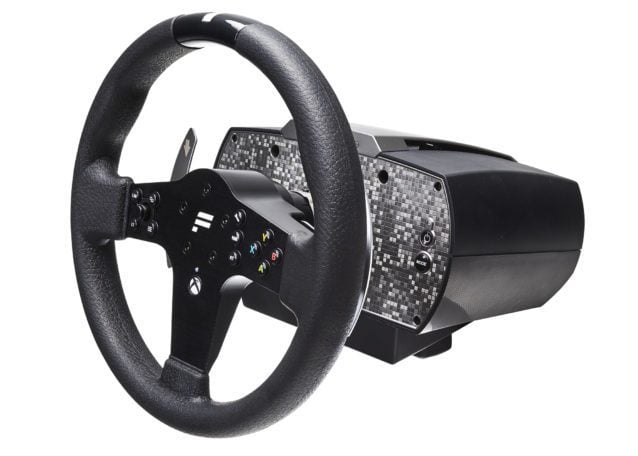
Video games, at least in the beginning, are a fairly inexpensive hobby. Sure, a console will set you back a few bills, and games cost substantially more than a physical copy of a movie (I hear some people still buy those). But on a cost-per-hour basis, gaming has its advantages.
Unless your preferred poison is driving games, that is. You see, while a dedicated COD player’s biggest concern is which headset they’ll be using, racing brings with it a whole host of accessories. Oh, you got a wheel? That’s a nice start. It probably came with basic pedals, but you’ll want to upgrade. Maybe get a shifter. All that gear will need a structure to hang off of. A wheel stand is good, but can I interest sir in a cockpit, complete with racing seat?
We kid, but the good news is that the market is massively bigger than it was even only a decade ago. Where only a handful of options existed for the more passionate player, there are now accessories catering to all manner of budgets.
It’s into this fertile market that Fanatec has launched its new mid-range lineup, the CSL Elite (check out the original announcement here). After a month with the model, we’re confident in saying we’d plunk down our own hard-earned for the whole package.
Full Disclosure: Fanatec sent us a pre-production CSL Elite bundle (which you can pre-order from the official site here) to put through its paces. Thanks Julian!
We also want to thank Teddy and the team at Simulation 1 Systems for providing us with a wheel stand for the review. S1S has a wide range of sim accessories, and is the only official Fanatec distributor in Canada. If you’re up in the Great White North, we recommend giving them a ring. Tell them GTPlanet sent you. Thanks Teddy!
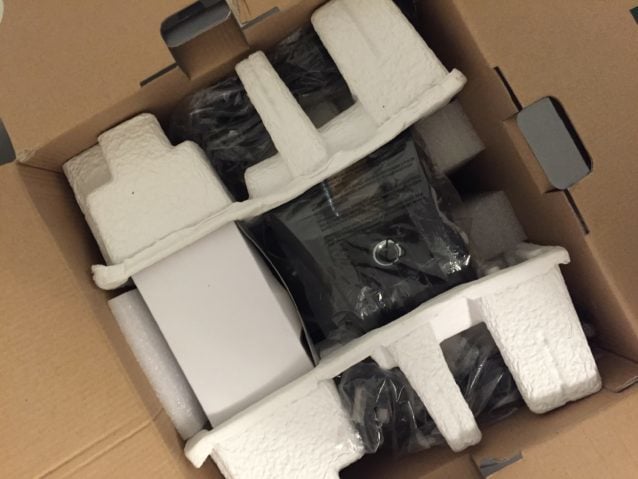
Unboxing
The whole kit arrived promptly in a sturdy collection of boxes. Unboxing the wheel base presents a cheeky “Straights are for / fast cars / turns are for / fast drivers” teaser on each top flap, setting a good tone. An elaborate setup made from the same material as egg containers holds the base securely: if it’s good enough to keep something that delicate from breaking, it’s good enough to protect a $300 gaming peripheral.
Joining the Elite wheel base is the Xbox One-compatible P1 steering wheel and arguably the star of the whole bundle, the CSL Elite Pedals LC. This three-pedal setup utilizes a load cell for the brake, capable of a whopping 16-bit resolution. The throttle and clutch — the latter being the brake pedal of the cheaper two-pedal Elite set — make due with a comparatively primitive 12-bits. Tongue placed firmly in cheek there: that equates to over 4000 available input levels!
We’ll address the primate sitting in the corner now too: yes, the wheel sadly does without PS4 compatibility. We’re not quite sure what the full story is between Fanatec and Sony currently, nor when Sony support will again feature in the company’s products, so for the time being, this wheel is only compatible with the Xbox One and PC.
Wheel Base & P1 Steering Wheel
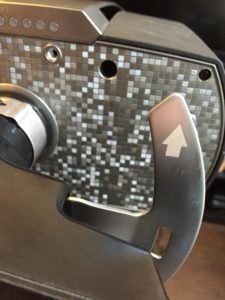
The CSL Elite Wheel Base feels like a quality item right from the start. Despite the plastic cowl, it doesn’t feel cheap, and I personally like the tiled face and textured sides. The vented rear offers plenty of breathing for the brushless servo and single belt drive. The base comes with a table mount that works in combination with two small feet screwed into the underside.
The big draw of the CSL Elite base — outside of the 1080-degree rotation — is Fanatec’s eminently customizable race menu. Being able to not only set things like wheel rotation, force feedback, and deadzone on the fly, but save custom profiles within the peripheral itself is far more of a benefit than expected.
The P1 pairs nicely with the base. A sizeable 30cm (12in) across, it feels more like a proper wheel and less like a toy. All of the Xbox controller’s standard buttons are available and logically laid out, making it a relatively painless affair to jump from pad to wheel.
One thing I have to be critical of is the “quick-release” system for the wheel: it didn’t feel particularly speedy. Not that it’s cumbersome, because it isn’t — the single bolt is easily accessible, and is dispatched quickly with the Allen key the bundle comes with. No, my concern was how much force I needed to apply to remove the rim! Mechanical sympathy had me worried I’d break one of the connector pins, but no such thing happened.
The entire package took very little time to set up. I had a small input issue that was a bone-headed error on my part, but otherwise, everything was ready to go on the wheel stand well within a few minutes.
Elite Pedals & Loadcell Kit
The third (and far away the largest) box of the bundle housed the pedals. It seemed odd this would be the biggest box, but upon opening it all made sense: the whole three-pedal setup was already fully assembled and carefully ensconced in padding.
The Elite Pedal duo on their own are an $80 USD proposition. What you get with that is a throttle and brake pedal both capable of 12-bit resolution, and formed out of solid aluminium. Despite the alloy construction instead of plastic, the set is quite light, with noticeable cut-aways on the base and pedal arms. By default the pedal faces come with rubber covers: Fanatec sent along some grip tape, but I stuck with the rubber and some Nikes for driving.
The modular design puts players in control of the pedal spacing. I fiddled with it and found it simple enough to modify, with the heelrest acting as the base. A set of metal rods with plastic spacers also ensure there’s no play in the pedals under heavy use. Fanatec states you can even mount each pedal individually, and we have no reason to doubt the claim.
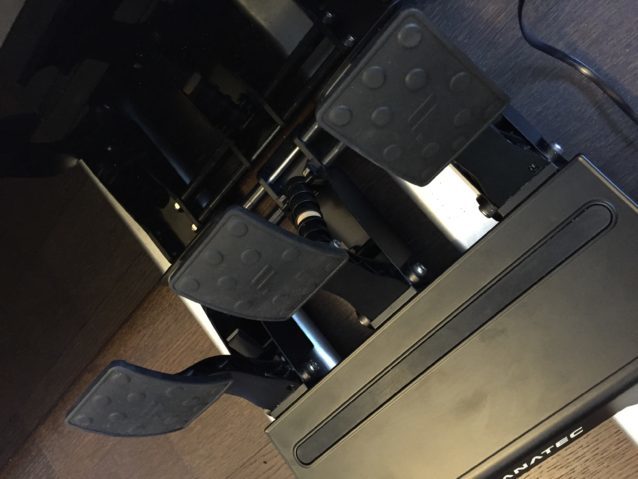
The Loadcell Brake kit is a whole other monster. Shifting the existing brake pedal over to clutch duty, the single pedal is $130 USD. While that may sound pricey in isolation, Fanatec will sell the combo for $200 USD (shaving a useful tenner off compared to buying individually).
The LC relies on brake pedal pressure, just like a real car. The kit ships with four different collections of elastomer springs, all with unique hardness ratings. Out of the box, my pedal ran the 65 (18.66kg) springs, which occupies the lower end of the spectrum (45 = 9.75kg; 85 = 40kg; 95 = 90kg).
The brilliant part of this is the simplicity: swapping out the springs is a tool-less affair. The pedal has room for six springs, letting players mix and match with different combinations to find the perfect level of resistance. I stuck with the default set of five 65’s plus the one polyurethane foam piece. It could be because I had started with that setup, so felt the most familiar with it. It could also be because I drive cars with comparatively marshmallowy brake pedals. The jury’s still out.
One thing for the hardcore amongst you to keep in mind: the wide heelrest could make cockpit mounting difficult. We couldn’t try that out for ourselves — we would’ve if we could’ve.
https://www.youtube.com/watch?v=JE3-n861p8U&feature=youtu.be
Test Drives
With Fanatec currently offering a free copy of Assetto Corsa to racers that pre-order this bundle, it felt like that was a natural place to start. Our review, which you can read here, touched on the experience. Needless to say, it was a good one. No; it was great.
The CSR Elite package provided a level of feedback and enjoyment I hadn’t experienced before. The wheel rim would gently vibrate as the front tires of my Abarth exceeded their limits, while it’d tug and fight me when I’d mash the throttle with any lock applied. Force feedback is smooth and natural-feeling: there’s no hint of slack like the wheels of old, where resistance would only kick in a fraction of a second after your input.
Changing settings through the wheel’s menus was a cinch. If you’re a Gran Turismo fan, think of the in-race menu that was available to wheel users — or dexterous pad players — letting them modify traction control and other settings on the fly, except turned up to 11. It lets you tailor the drive as it’s taking place, without the time-suck of jumping off the track to fiddle with in-game menus.
Put simply, the pedals are a joy. I didn’t get to test the two-pedal version — which again retails for a very reasonable $80 USD — but the three-pedal with loadcell is easily the best set of pedals I’ve had the pleasure of dancing on. Everything just feels natural, from the spring-back of the throttle to the way you can eke out the precise amount of braking through nothing more than a flex of your toe.
The only smear in Assetto’s logbook was an in-game FFB setting that was too high, causing the wheel to see-saw on straights. Turning it down to a fraction seemingly remedied the situation.
Project CARS was next on the list. As someone who has been less than impressed with the game thanks to poor controller optimization — and that being the only input method I was able to use at the time — it was transformed with the Elite. Thanks to some wheel setting advice from our man Scaff, I was wagging a Clio Cup around Cadwell in no time.
Feedback through the wheel wasn’t quite as good as Assetto Corsa here, but the pedals once again were the highlight of the package. The little Renault is not afraid to pitch sideways if you’re too aggressive with closing the throttle or applying the brakes, so the high resolution of the two pedals meant I could extract maximum performance from the car.
https://www.youtube.com/watch?v=2vc0AzRUmVc&feature=youtu.be
The third title to take part in the test drive was Forza Motorsport 6. As the game I was most familiar with, I expected less of a jump between the wheel and the typically-excellent controller implementation of the game. These expectations were tempered by previous experiences with wheel setups and the game too: I’ve driven the Thrustmaster TX and TMX setups with FM6.
The major snag for the game is a lack of resistance and feedback through the rim. It’s there, but it’s not as detailed as either of the other titles. The Fanatec’s tuning menu alleviates this somewhat, but there’s still work to be done.
Lastly, we took the newly-released Forza Horizon 3 for the briefest of drives (review here). It too suffers from a light helm, but not as badly as its predecessor. The CSL package did provide more feedback through both the rim and pedals than the Thrustmaster TX I used last month at X16, but that could have been used by thousands of other people before me. It also utilized an older build of the game, so a direct comparison will have to wait.
Despite being pre-production models, we experienced no build issues with either the wheel base or the pedal set. The one small problem that manifested was with the D-Pad stand-in on the P1, which jammed a few times. This was remedied with nothing more than a simple twist. Our bundle came without a North American power cord, but that was solved by scavenging the closet for a suitable stand-in.
One drawback of the pedal set, especially with the Loadcell, is the lack of grip when left on the floor. Depending on your preferred stiffness, you’ll be putting a lot of pressure on that middle pedal, and the entire assembly will run away because of it. Of course, a full-on rig would solve this issue. I may have been doing some digital window shopping by the end of the testing period. It looks like the bug has claimed another victim…
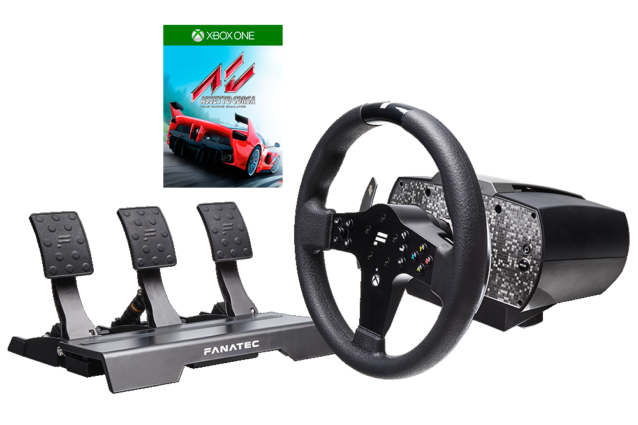
Conclusion
It’s time to be honest: I haven’t bought myself a new wheel in over a decade. My trusty DFP kept on chugging through the PS3 generation, and it did all I ever needed during those years. Even recently, I hooked up another to play GT6 and found it an enjoyable experience.
I wanted to approach this from a relative newcomer’s perspective. The CSL Elite bundle is billed as only a mid-range wheel, yet it costs almost double what my Xbox One did. Is it good enough to lure the people only just starting their sim accessory journey?
Yes. The CSL Elite may cost more than the comparable Thrustmaster or Logitech setup, but it offers a solid base to make your own. The G29/G920 offers little in the way of customization compared to the other two. Thrustmaster’s T300RS is remarkably similar on paper — 1080-degree rotation, powerful brushless motor, detachable wheel — but can’t match the Elite’s trick three pedal set.
True, the Elite pedals are one piece items, attached to the arms and therefore less customizable in terms of height or surface. The arms themselves being able to move across the horizontal axis (or mount individually) largely makes up for this however, and that all-aluminum construction should make them long-lasting. The price of the Loadcell Kit makes up most of the sticker difference, and the level of fine-tuning available with that easily justifies the extra outlay.
The CSL Elite Series gets our nod of approval. This is more than just a toy wheel, and really brings a new level of immersion to this great pastime of ours. It’s a well-built, practical addition to the Xbox ecosystem. If you’ve got the budget, you won’t regret it.
You can pre-order the whole CSL Elite bundle — complete with Assetto Corsa for XB1 — for $639.85 USD from the official Fanatec site right here. The Elite Wheel Base retails for $299.95 and is available here. The Elite Pedals list for $79.95 for the two-pedal kit, or $199.95 for the three-pedal setup.
Don’t forget to stop by our Sim Racing Hardware forum for more in-depth discussions with other players about this and other sim racing accessories.
See more articles on Assetto Corsa, Fanatec CSL Elite, Pedals, Project CARS, Review, and Steering Wheels.




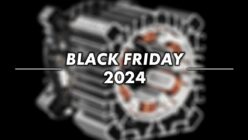

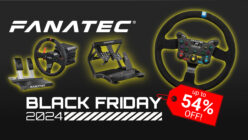
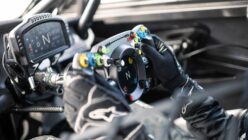
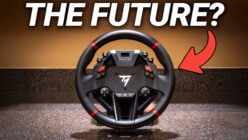


Will they be ready with a PS4-enabled setup in time for GT:Sport? Hmmm
Good article, it’s a nice read. But calling this a “mid-range wheel” puzzles me. This is $639.85 USD. Nowhere near “mid-range”. I don’t know what you would call “high-end wheel” but $639.85 USD is way too much for me. I think G29 and TS300 are mid-range wheels for a reasonable price. Fanatec offers exotic high-end gear and Assetto Corsa (maybe PCars, too) is/are the only games on this list which take full advantage of it.
Its cool that their setups are very modular with lots of options but Im also dissapointed that they dont have an entry level wheel thats next gen compatible.
If I am going to spend $600+ I guess I am just going to build a PC then and continuing to use my Fanatec CSR that wont work on XB1 or PS4, instead of shelling out for a new wheel and using my old one as a paperweight.
An Accuforce wheel is $2000. A budget wheel is $150. Hence a $639 is a mid-range wheel.
What about the 6 gate shifter?
sold separately I am sure
I was almost ready to buy the Thrustmaster Ferrari Edition but was put off by reading all over the internet about reliability issues. Then, Fanatec dropped support for Sony. If it doesn’t play Gran Turismo Sport then a no go for me.. Fanatec, fix your attitutude and your politics and let’s talk again…
Looks good, in need of a new wheel. Need to sell my Fanatec GT2 wheel in since its non compatible now. Will the V.1 Clubsport pedals work with this?
$639.85 USD
:s
Yeah :(
“Thrustmaster’s T300RS is remarkably similar on paper — 1080-degree rotation, powerful brushless motor, detachable wheel — but can’t match the Elite’s trick three pedal set.”
Well I would say why don’t you compare it to the Thrustmaster TX Leather Edition instead of just the T300RS? The TX Leather comes with the TX base AND the T3PA 3-pedal set AND the leather GT addon wheel. AND it still a great deal cheaper than this new Fanatec wheel.
I tried the TX briefly at X16 and can’t say it measured up to the CSL Elite. It wasn’t bad by any means, but it didn’t wow me.
Admittedly, some more controlled-environment seat time with it would be a huge benefit in terms of direct comparisons.
I love the way Fanatec and Thrustmaster are designing their wheels… clean, black, metal. I like the quality of my G29, but that toy-look with all that bright blue plastic crap and RPM led blinking really throws me off – Just make it simple and sturdy, so well done there.
Nice one! Fanatec = quality you get what you pay for, and i probably pay too much :P I’ll probably pick up the base and rim next year to level up from my trusty CSR.